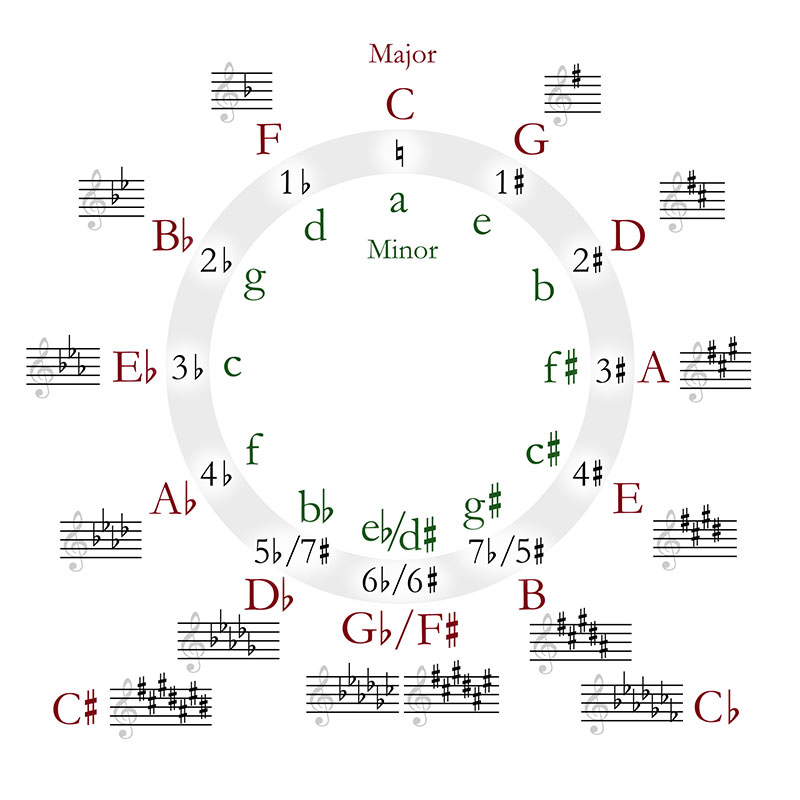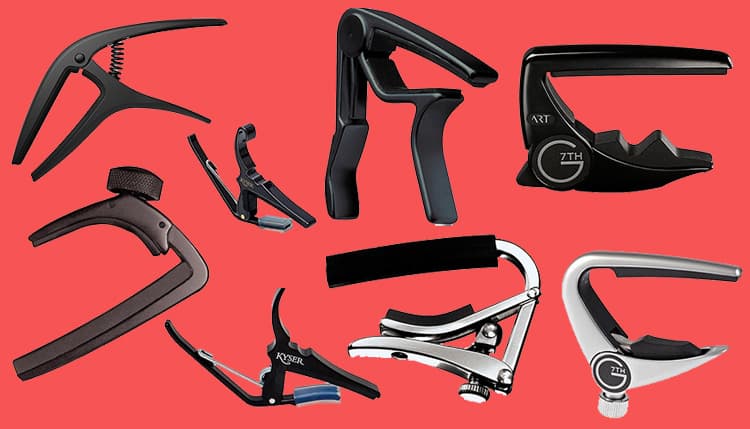Understanding and mastering the major scale on the guitar is fundamental for any aspiring guitarist.
This guide will help you delve into the intricacies of the major scale, its importance, and practical ways to practice it.
By the end, you’ll have a solid foundation to build your guitar-playing skills.
What is the Major Scale?
The major scale is one of the most essential scales in music theory, forming the backbone of Western music.
It consists of seven notes arranged in a specific pattern of whole and half steps (W-W-H-W-W-W-H).
This sequence gives the major scale its characteristic sound, often described as bright and happy. You definitely won’t be using the it to make those sad songs.
Image Credit: Just plain Bill
Why Learn the Major Scale on Guitar?
Learning the major scale on guitar is crucial for several reasons:
- Foundation for Music Theory: Understanding the major scale helps in comprehending chords, progressions, and other scales.
- Improvisation: The major scale is the starting point for improvising solos and creating melodies.
- Ear Training: Practicing the major scale improves your ability to recognize notes and intervals by ear.
- Technical Skills: Playing the scale enhances finger dexterity and coordination.
How to Play the Major Scale on Guitar
Let’s break down the major scale into a step-by-step process:
- Learn the Pattern: The major scale follows a specific pattern of whole steps (W) and half steps (H): W-W-H-W-W-W-H. For example, in the C major scale, the notes are C, D, E, F, G, A, B, and C.
- Fingering Positions: There are five common positions to play the major scale on the guitar. Each position allows you to play the scale across the fretboard, making it easier to connect different areas.
- Practice Each Position: Start by practicing each position slowly, ensuring you play each note cleanly. Use a metronome to maintain a steady rhythm.
- Connect the Positions: Once you’re comfortable with each position, practice connecting them. This helps in playing the scale fluidly across the entire fretboard.
- Play in Different Keys: Transpose the scale to different keys by starting on different root notes. This improves your versatility and understanding of the fretboard.
Major Scale Patterns on Guitar
Here are the five common major scale patterns, starting with the root note on the 6th string:
Pattern 1:
E|-------------------------|----------------|
B|-------------------------|----------------|
G|----------------5--7--4--|----------------|
D|------------5--7---------|----------------|
A|-----5--7---------------|----------------|
E|--5----------------------|----------------|
Pattern 2:
E|----------------------|-----------------|
B|----------------------|-----------------|
G|----------------------|-----------------|
D|--------------4--5--7-|-----------------|
A|------4--5--7---------|-----------------|
E|--5-------------------|-----------------|
Pattern 3:
E|------------------------|----------------|
B|----------------5--7--8-|----------------|
G|------------4--5--------|----------------|
D|------5--7--------------|----------------|
A|--7---------------------|----------------|
E|------------------------|----------------|
Pattern 4:
E|----------------------|-----------------|
B|----------------7--8--|-----------------|
G|------------5--7------|-----------------|
D|------5--7------------|-----------------|
A|--7-------------------|-----------------|
E|----------------------|-----------------|
Pattern 5:
E|----------------------|-----------------|
B|----------------7--8--|-----------------|
G|------------7---------|-----------------|
D|------5--7------------|-----------------|
A|--7-------------------|-----------------|
E|----------------------|-----------------|
Tips for Practicing the Major Scale on Guitar
- Use a Metronome: Practice with a metronome to develop timing and precision.
- Start Slow: Begin at a slow tempo and gradually increase speed as you become more comfortable.
- Alternate Picking: Use alternate picking (down-up) to develop picking efficiency.
- Visualize the Patterns: Visualize the scale patterns on the fretboard to improve your understanding.
- Practice Daily: Consistent daily practice is key to mastering the major scale.

Applications of the Major Scale
- Chord Construction: The major scale is used to construct major chords and other chord types.
- Soloing: Use the major scale as a foundation for creating solos and improvisations.
- Melody Creation: Many melodies are based on the major scale, making it crucial for songwriting.
Mastering the major scale on guitar is an essential skill that opens up numerous possibilities in your playing.
By understanding the scale patterns, practicing diligently, and applying the scale in various musical contexts, you’ll develop a strong foundation in guitar playing.
Start today, and watch your musical abilities soar!
FAQs for Major Scale Guitar
1. What is the major scale on guitar? The major scale is a sequence of seven notes following a specific pattern of whole and half steps (W-W-H-W-W-W-H). It’s fundamental in Western music and forms the basis for chords, melodies, and improvisation.
2. How do you play a major scale on guitar? To play a major scale on guitar, start by learning the pattern of whole and half steps. Practice the scale in different positions on the fretboard, starting with the root note and following the pattern.
3. Why is the major scale important for guitarists? The major scale is essential for understanding music theory, creating melodies, improvising solos, and constructing chords. It forms the foundation for more advanced musical concepts and techniques.
4. What are the different patterns of the major scale on guitar? There are five common patterns to play the major scale on the guitar. Each pattern allows you to play the scale across different areas of the fretboard, making it easier to connect and navigate the notes.
5. How can I practice the major scale on guitar? Practice the major scale by using a metronome to maintain a steady rhythm, starting slowly and gradually increasing speed. Focus on alternate picking, visualizing the patterns, and practicing in different keys.
6. What are some tips for mastering the major scale on guitar? Some tips for mastering the major scale include practicing daily, using a metronome, starting slow, visualizing the scale patterns on the fretboard, and connecting the different scale positions.
7. How do major scale patterns help with improvisation? Major scale patterns provide a roadmap for improvisation, helping you understand where to place your fingers and which notes to use. Practicing these patterns improves your ability to create solos and melodic lines.
8. Can I play the major scale in any key on the guitar? Yes, you can play the major scale in any key by starting on different root notes and following the same pattern of whole and half steps. This helps you understand the fretboard and improves your versatility.








